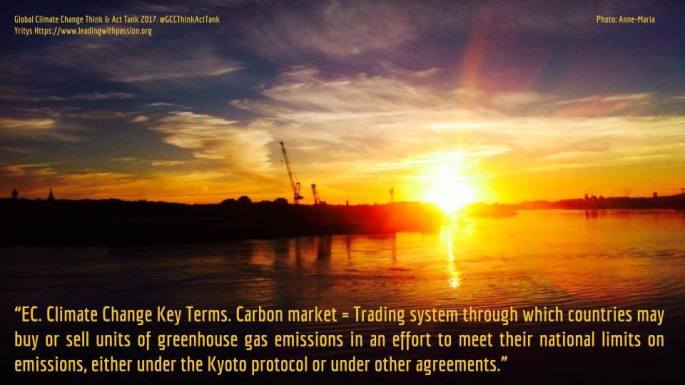When I first started to replace specific meat products in my regular diet many years ago, my decision was not based upon the impact of food (and meat) on the environment or the fact that the production of specific products (such as cheese and beef in particular) have a far greater impact on our environment than many other options of food that can replace an excessive consumption of food products with a heavier CO2 footprint. I moved away from using certain meat products due to the fact that I thought these would be healthier options, such as using textured soy protein granules instead of minced meat when cooking at home. As opposed to minced meat, the consistency of soy protein granules is far less fatty (0,8g fat/100g) and includes much more proteins (53g/100g).
It has been delightful to notice how the out-of-home and retail food markets for instance in Finland have developed in recent years, with more and more vegetarian or even vegan product launches from traditional “meat brands”. While meat consumption per capita in Finland and in Europe is still very high (Eurostat 2019), meat consumption per capita is slowly decreasing although the European Commission forecasts a growing world demand for meat by 2025 while at the same time seeing a slight decline in the GHG´s (greenhouse gas emissions) caused by meat production and consumption in the EU.
According to both EPA (Environmental Protection Agency) in the USA and the EC (European Commission) in Europe, agriculture alone accounts for between 9-10% of all global greenhouse gas emissions such as carbon dioxide CO2 and methane CH4, whereas industry, electricity and transportation today all account for between 20-30% of all global greenhouse gas emissions. Although agriculture alone accounts for “only” around one tenth of all global greenhouse gas emissions as per today, it is a fact that industrial agriculture and animal farming require both electricity and transportation in addition to the fact that industrial agriculture/farming with poor land, waste and water management practices in reality cause far more harm to our environment leading to changes in not only landscapes around the world but also impoverishment and erosion of soils.
This is a far too complex issue to be addressed in one article, although an idealist could state that in an ideal (utopian) world we should all be growing our own food on small plots of land and give up the idea of any commercial food production or industrialized agriculture and farming. People would consume increasingly much fruits, vegetables, nuts and seeds and less (or zero) animal products, including any dairy or meat.
With a growing number of vegetarians and vegans around the world and many developed countries focusing upon a growth of overall food consumption from close food production (i.e. a food chain whereby the food has been produced locally), urban farming and other ideological attempts to reduce one´s carbon footprint (or, more precisely: greenhouse gas footprint since carbon dioxide is not the only greenhouse gas) through eating habits, this ideology of a utopia has become a reality for consumers who know better and who try to save the world or perhaps themselves through better choices both in terms of personal health, the well-being of animals and the well-being of our environment.
However naive idealists may be in their attempts of saving a collapsing world or a collapsing environment, it is a fact that our current way of living on this planet is unsustainable. People in developed countries are consuming at a rate where we would need at least three or more planet Earth´s although we actually live on the only planet of this capacity in our entire galaxy, and no one has yet managed to find another planet in the entire Universe where all of humanity can pack their bags and move if and when we manage to destroy our current ecosystem, a good and realistic possibility and a vision in the upcoming few decades if we keep destroying our home planet at this rate.
There is no Planet B.
If you are unsure about what actions you can take in terms of protecting the environment and our only home planet, start by searching “carbon footprint calculator” on the Internet. I would rename all existing carbon footprint calculators to “greenhouse gas emission footprint calculators” due to the somewhat misleading name, since carbon dioxide is not the only greenhouse gas that has a negative impact on our environment, causing us humans to change the Earth´s climate through the greenhouse effect, where all greenhouse gas emissions combined form an artificial greenhouse that is year by year warming the Earth´s atmosphere unless we manage to stop or even reverse this development and which is the reason behind the Paris Agreement from 2015.
One very simple way of individual climate and environment action is to start eating and consuming for instance food products in a wiser manner. Cut down on (red) meat consumption, and cut down your overall consumption of dairy products. Eat more locally produced food. Eat at least half a kilogram of fruits and vegetables every day (good for your personal health too). Replace some of your meat consumption with vegetarian or vegan alternatives. Eat a handful of nuts or seeds (unless you have an allergy of course) on a daily basis. Do not throw away food or if you do, please see if you can place it in the biodegradable waste. Improve your overall recycling habits. If recycling in your home city/country is at a poor or non-existing level, do something about it! There are many business opportunities involved within for instance the recycling sector, such as using certain waste materials to produce energy and heat.
Anne-Maria Yritys 16.2.2019.
All rights reserved.






